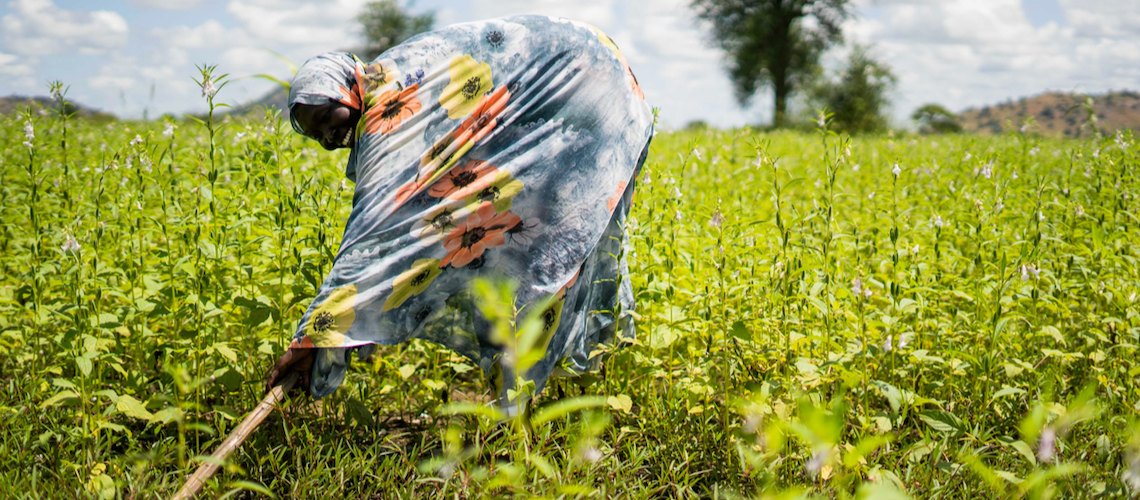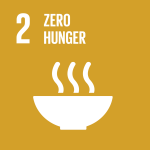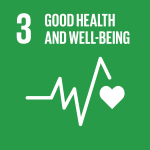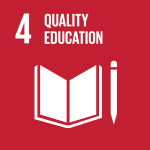
Around 95% of the population of South Sudan dependon climate sensitive natural resources, including agriculture. Long periods of conflict have led to the highest levels of food insecurity in the world.
Climate change-induced increases in temperature, variation in rainfall, and increased frequency and intensity of extreme events are causing losses in crops and livestock and increasing pests and disease. Extension agencies lack capacities to support communities in adapting to these emerging challenges. Meanwhile maladaptive coping strategies are triggering environmental degradation, undermining ecosystem function and services. Inappropriate farming practices are depleting soils in farms and rangelands, forcing their expansion and increasing conflict. Markets in South Sudan are underdeveloped, and value chains have unraveled in the decades of conflict.
This project will build long-term climate resilience among agro-pastoral communities using participatory watershed-based approaches that restore ecosystems. It will re-establish and strengthen market linkages and agricultural value chains and equip extension agencies to support communities in adopting gender-responsive, climate smart agricultural practices and diversifying livelihoods using hands-on, farmer-field based approaches. Climate change will be mainstreamed into management plans and programmes in agriculture and NRM and proactive collaboration and knowledge sharing will build synergies with other relevant initiatives.
In addition to Climate Action (SDG 13), the project will contribute towards the achievement of multiple Sustainable Development Goals, including SDG 2, SDG 3, SDG 4 and SDG 15.
- Community
- National
- Regional
- Local Governments
- National Governments
- Non-Governmental Organizations
- Private Sector Partners
- United Nations Development Programme (UNDP)
Total beneficiaries: 733,872 (292,600 direct beneficiaries + 441,272 indirect beneficiaries)
- United Nations Development Programme (UNDP)
- Global Environment Facility (GEF)
- Government of Sudan
Expected outcomes
Outcome 1: Strategies and capacities to implement community based and gender-responsive climate change adaptation for agriculture and food value chains across South Sudan.
Outcome 2: Best practices in climate change resilient agriculture and food value chains adopted by rural communities.
Outcome 3: Communities in micro-watersheds adopt natural resources management and restoration to reduce climate change impacts.
- Image

- Image

- Image

- Image

- Image

The ‘Watershed approaches for climate resilience in agro-pastoral’ project will operate simultaneously at national and the local level. Frameworks needed to support and re-build key value chains in the agriculture and agro-processing will be identified and strengthened.
Project strategies will focus on the women and vulnerable groups within local communities who are the most vulnerable to the impacts of climate change. Building on prior projects, best practices will be fine-tuned to ensure the meaningful participation of women and vulnerable groups in project activities. Vulnerable households and representatives of communities will be mobilized to ensure representation of women and vulnerable groups. Groups and committees will be formed to plan and participate in project implementation.
The project will adopt a hands-on, demonstration-based approach for transfer of climate smart technologies which have proven to be successful. Farmer field schools and demonstration plots will be set up in selected villages and cattle camps. These will be hosted by progressive farmers and pastoralists who are identified and facilitated to play the role of mentors. Women farmers will specifically be asked to lead demonstrations of activities preferred and identified by women during the stakeholder engagements. These include crop and vegetable farming and income diversification through dairy cows, small ruminants, agro-processing and harvest and processing of NTFP such as gum and honey.
The project will help formulate norms for resource sharing and management between farming and pastoral communities and will strengthen and create multi-stakeholder platforms and mechanisms for addressing disputes and reducing conflict which threatens to derail the development efforts in the region. The increased social capital and institutional capacities among both CBO, government and non-government stakeholders and the private sector is expected to sustain and strengthen these mechanisms. Strengthening market linkages and value chains will be a key focus of project.
One of the key strategies of the project design is the use of watershed approaches. This strategy recognizes that functioning ecosystems are integral to livelihood security. This strategy dictates that interventions are integrated and synergies between the activities and their impacts are maximized. The project will focus its interventions within hydrologic boundaries of selected catchments. This includes the strengthening and creation of local institutions to manage and sustain these activities past the project period. The watershed approach will facilitate emphasis on integrated approaches in the conservation and effective use of soil and water. Watershed restoration is recognized as an effective strategy for disaster risk reduction through building resilience of communities against climate change and eventualities such as the slow onset of droughts. The project takes this further by strengthening both the practices and interactions between producers, entrepreneurs and traders who are part of the agricultural supply and value chains.
Outcome 1: Strategies and capacities to implement community based and gender-responsive climate change adaptation for agriculture and food value chains across South Sudan.
Output 1.1: Integration of climate change adaptation strategies in agriculture and natural resources management policies.
Activity 1.1.1: National dialogue on gender responsive climate mainstreaming in key policies and plans for agriculture and natural resource management at all levels of government.
Activity 1.1.2: Building baselines of climatic, socioeconomic, ecological, edaphic and topographical characteristics of the project sites to inform site prioritization.
Activity 1.1.3: Conducting field surveys on productivity potential of different land cover/use and developing site specific intervention strategies and plans for climate smart agricultural interventions and catchment restoration with communities.
Activity 1.1.4: Conducting a field based assessment of income and livelihood diversification options.
Activity 1.1.5: Knowledge sharing at all levels - from communities to county, state, national regional to global.
Output 1.3: Guiding materials to support climate-responsive extension services developed, delivered and distributed
Activity 1.3.1: Conducting site specific capacity assessment of line departments and extension services at county, payam and boma levels.
Activity 1.3.2: Developing a comprehensive social inclusion action plan and strategy that integrates gender and equity concerns into extension services and mobilization for CCA planning.
Activity 1.3.3: Developing gender-responsive site specific extension and advisory packages including inputs, implements and training materials.
Activity 1.3.4: Disseminating training materials and modules to communities and ground level institutions in local languages.
Output 1.4 Training of trainers and extension personnel delivered to support climate-smart agriculture and natural resources management
Activity 1.4.1: Identifying and training extension staff for climate smart agriculture among crop, vegetable and livestock farmers.
Activity 1.4.2: Training extension and line departments, NGOs and community based animal-health workers.
Activity 1.4.3: Training on soil and water conservation and landscape restoration to extension staff and line departments, NGOs and community based extension workers and volunteers.
Activity 1.4.4: Training on income and livelihood diversification to extension and line departments, NGOs and community based extension workers and volunteers.
Activity 1.4.5: Training on community mobilization for gender equity and social inclusion to extension and line departments, NGOs and community based extension and animal-health workers.
Outcome 2: Best practices in climate change resilient agriculture and food value chains adopted by rural communities.
Output 2.1 Integrated and diversified climate-smart farming practices adopted to reduce risk of crop failure through improved seeds, multi-cropping, crop diversification, crop-livestock systems and agro-forestry
Activity 2.1.1 Establishing demonstration sites for climate smart agricultural practices.
Activity 2.1.2 Establishing plant nurseries with women and youth groups and at the SMoAEF.
Activity 2.1.3 Identifying pastoralists and hosting pastoral field schools for adaptive solutions.
Output 2.2 Farmer field schools established and community-based organizations strengthened to enable adaptive practices and provide local support to farmers with the adoption of low cost techniques for climate resilient agriculture
Activity 2.2.1: Identifying and strengthening customary CBOs and mobilizing new user groups to ensure gender responsive and inclusive community based mechanisms to implement project activities.
Activity 2.2.2 Selecting suitable cereal and vegetable crops based on in-situ tests cum demonstration plots and conducting seasonal farmer field schools for hands on training on CSA practices including use of implements.
Activity 2.2.3 Conducting hands on training through seasonal pastoral field schools.
Activity 2.2.4 Holding seasonal camps in both crop and vegetable farming settlements.
Activity 2.2.5 Holding seasonal camps in pastoral and agro-pastoral settlements.
Output 2.4 Alternative livelihood options such as bee keeping, backyard poultry, kitchen gardens and small ruminants made available to communities with a focus on vulnerable households
Activity 2.4.1 Identifying and developing participatory livelihood diversification plans.
Activity 2.4.2 Holding seasonal camps in both agricultural and pastoral/agro-pastoral settlements for hands on training and material support for agro-processing and value addition for income diversification.
Activity 2.4.3 Facilitating access to credit to agro-pastoral communities and entrepreneurs
Activity 2.4.4 Establishing linkages and facilitate transactions between rural producers and entrepreneurs and shopkeepers in markets for sales of produce.
Activity 2.4.5 Participatory monitoring and assessment of activities and their impacts involving user groups and selected households.
Outcome 3: Communities in micro-watersheds adopt natural resources management and restoration to reduce climate change impacts.
Output 3.1 Restoration plans based on ground surveys of micro-watersheds delivered, vetted and approved by micro-watershed-based committees comprised of representatives of all stakeholders
Activity 3.1.1 Mobilizing communities to create gender-equitable micro-watershed committees.
Activity 3.1.2 Developing site specific plans for interventions in the watershed.
Activity 3.1.3 Conducting participatory assessments and evaluations.
Output 3.2 Improved ground water recharge and soil moisture retention through community-based soil and water conservation measures in micro-watersheds
Activity 3.2.1 Constructing soil and water conservation structures and stabilizing slopes on community lands with contributions of labour and material from communities.
Activity 3.2.2 Planting and seeding appropriate and indigenous multi-purpose species of trees, shrubs and grasses.
Activity 3.2.3 Undertaking on-field soil and water conservation with farmer groups coupled with strengthening of structures through planting multi-use grasses, shrubs and trees.
Activity 3.2.4 Involving communities in maintenance, protection and management of structures and planting efforts on community lands.
Output 3.3 Reduced impacts of floods through creation of water storage and spreading structures and drainage control measures in the catchment
Activity 3.3.1 Constructing small dykes, diversion canals and water storage ponds and spreading structures on community lands with material and labor contributions from the community.
Activity 3.3.2 Planting and seeding appropriate and indigenous multi-purpose species of trees, shrubs and grasses to stabilize slopes and sides of structures, arrest erosion and increase infiltration while increasing available biomass.
Activity 3.3.3: Undertaking construction of drainage channels and ponds on farmer lands with farmer groups coupled with strengthening of structures through planting multi-use grasses, shrubs and trees.
Activity 3.3.4: Cleaning and maintaining channels, streams, ponds and water spreading structures.
Output 3.4 Increased resilience to drought through creation of water points from shallow boreholes
Activity 3.4.1 Constructing water points at strategic locations.
Activity 3.4.2 Operation, maintenance and monitoring of water points.
Activity 3.4.3 Linking water points with small scale/micro-irrigation for vegetable gardening and life-saving irrigation.
Project-level monitoring and evaluation will be undertaken in compliance with UNDP requirements as outlined in the UNDP POPP (including guidance on GEF project revisions) and UNDP Evaluation Policy The UNDP Country Office is responsible for ensuring full compliance with all UNDP project M&E requirements including project monitoring, UNDP quality assurance requirements, quarterly risk management, and evaluation requirements.
Additional mandatory GEF-specific M&E requirements will be undertaken in accordance with the GEF Monitoring Policy and the GEF Evaluation Policy and other relevant GEF policies. The M&E plan and budget included below will guide the GEF-specific M&E activities to be undertaken by this project.
In addition to these mandatory UNDP and GEF M&E requirements, other M&E activities deemed necessary to support project-level adaptive management will be agreed – including during the Project Inception Workshop - and will be detailed in the Inception Report.
- Julien SimeryRegional Technical Specialist, Climate Change Adaptation, UNDP



